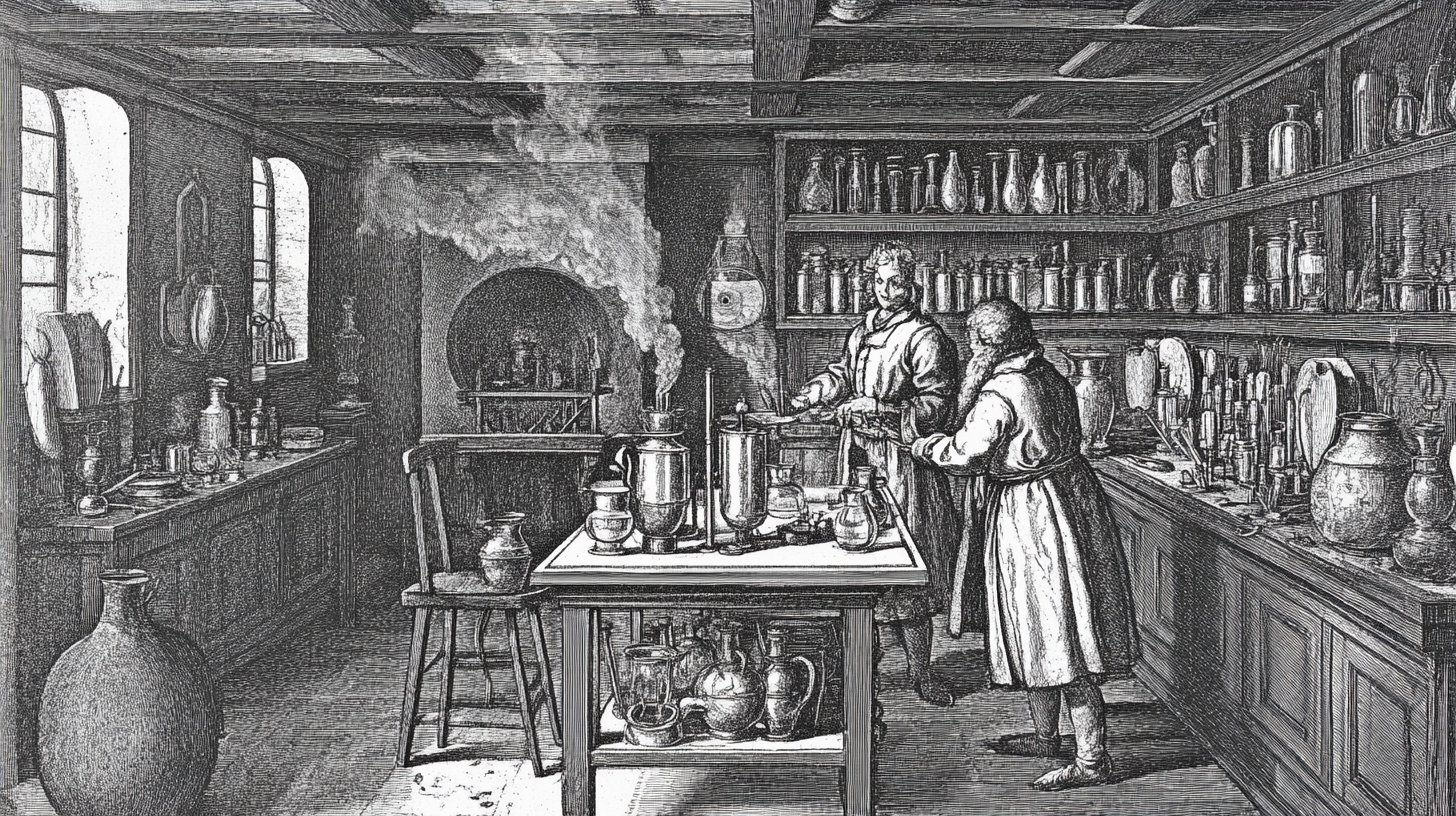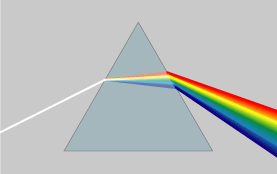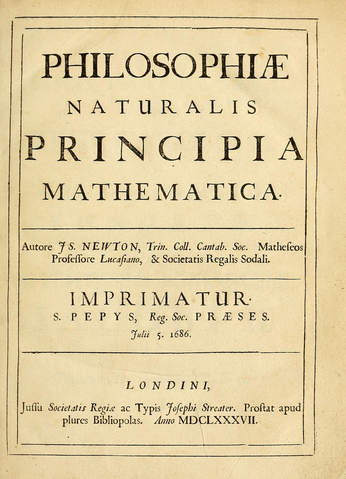Isaac Newton—when you hear this name, many of you might think of the law of universal gravitation or the inventor of calculus. However, Newton, known as the father of physics, had another side that was long kept secret: Newton the alchemist. In this article, we’ll focus on Newton’s alchemical research and delve into the world of his secret pursuits.

Sir Isaac Newton (1643-1727). Portrait by Godfrey Kneller (1689). At this time, Newton was deeply immersed in alchemical research. Behind his public persona as a physicist, he was secretly conducting alchemical experiments. ©James Thronill after Sir Godfrey Kneller
Newton’s Alchemical Notes
After Newton’s death, a vast collection of his notes on alchemy was discovered. These notes remained unpublished for many years, as it was feared they might damage Newton’s reputation as a scientist. However, in the latter half of the 20th century, these notes finally began to be studied in detail.
Newton’s alchemical notes contain detailed records of various experiments. For example, they describe the method for creating a substance called the “Green Lion.” This is believed to refer to a complex chemical reaction using antimony and mercury. Specifically, the process involves crushing antimony ore, mixing it with mercury, and then repeatedly distilling the mixture. Newton believed that this “Green Lion” had the power to transmute metals.
Newton was also passionate about the search for the “Philosopher’s Stone,” a legendary substance said to be capable of turning any metal into gold. His notes contain detailed records of experiments involving mixing, heating, and distilling various substances. For instance, there’s an experiment described where lead and sulfur are mixed and repeatedly heated and cooled. During this process, Newton meticulously observed and recorded changes in the color and texture of the substances. He described in detail how lead would turn black and then take on a reddish hue, believing these color changes indicated fundamental changes in the substance.

An imagined view of a 17th-century alchemical laboratory. Newton likely conducted his research on the ‘Green Lion’ and the ‘Philosopher’s Stone’ in a similar environment. Equipment such as distillation apparatus and furnaces were later applied to scientific experiments. Generated by AI
Interestingly, Newton didn’t just follow traditional alchemical methods; he developed his own theories. He proposed the concept of “corpuscles” (tiny particles) as the smallest unit of matter, believing that the properties of substances were determined by the combination and arrangement of these corpuscles. This idea bears similarities to modern atomic theory.
Central to Newton’s alchemical theory was the concept of “prima materia” (prime matter). He believed that all substances were composed of a common prime matter, and that different substances were created by variations in the arrangement and density of this prime matter. For example, he thought that the difference between gold and lead was in how the same prime matter was arranged. While this idea differs from the modern concept of elements in chemistry, it was an important attempt to understand the essence of matter.
Furthermore, Newton believed in “affinities” between substances, attempting to explain why certain substances attract or repel each other. He tried to understand these affinities in terms of attraction and repulsion between the corpuscles of substances. This can be seen as a precursor to theories of chemical reactions.
Newton also attempted to apply his alchemical worldview to the entire universe. He tried to explain planetary motion and celestial phenomena using alchemical principles of “sympathy” and “antipathy.” For instance, he sought to understand the gravitational attraction between planets as similar to the “sympathy” between substances in alchemy. This thought process was crucial in the development of his later theory of gravity.
17th Century Science and Mysticism
The 17th century, when Newton lived, was an era of scientific revolution. However, it was also a time when mystical disciplines like alchemy and astrology were widely believed. For many intellectuals of the time, science and mysticism were not clearly distinguished.
For example, Robert Boyle, a contemporary of Newton, was also deeply interested in alchemy. While Boyle is known for laying the foundations of chemistry, he was also an enthusiastic alchemist. Boyle explored the properties of substances through alchemical experiments, which contributed to the later development of chemistry.
Alchemy at the time was considered not just a means of making money, but also a way to unravel the mysteries of the universe. For Newton, alchemy was a means to approach the secrets of God’s creation. He sought to understand the fundamental properties of matter through alchemical experiments.
In Newton’s time, the term “natural philosophy” was used to mean what we now call “science.” Natural philosophy aimed to understand and explain natural phenomena, but its methodology differed greatly from modern science. It mixed mystical elements with empirical ones. For example, when studying celestial motion, mathematical calculations were considered alongside the mystical influences of celestial bodies.
The Influence of Alchemical Research on Scientific Discoveries
Newton’s alchemical research is believed to have significantly influenced his scientific discoveries. Here are some specific examples:
1. Influence on Optical Research
Newton’s research on the dispersion of light was directly influenced by alchemical experiments. He used a prism to decompose white light into a spectrum, a method similar to the distillation experiments in alchemy. In alchemy, mixtures are heated and distilled to separate different components. Newton applied this concept to light, discovering that white light is actually a mixture of various colored lights. Furthermore, he demonstrated that each color of light has a different refractive index, which is thought to be related to the concept of “purity” in alchemy.

Diagram of Newton’s prism experiment. It shows how white light disperses into various colors when passing through a prism. This experiment is believed to have been inspired by the concept of separation and purification in alchemy. Newton applied the precise observation techniques he cultivated in alchemy to study the properties of light. This discovery is a prime example of the close relationship between Newton’s alchemical research and his scientific discoveries. CC BY-SA 3.0, Link
2. Influence on Gravity Theory
Newton’s theory of gravity also shows influences from alchemy. Newton referred to the force of attraction between distant celestial bodies as an “occult force.” This is reminiscent of the concept of “sympathy” in alchemy. In alchemy, it was believed that there were invisible connections between substances. Newton developed this idea into understanding gravity as a universal force acting between all bodies. The concept of “quality” in alchemy is also thought to have influenced the formation of the concept of “mass” in gravity theory.
3. Contribution to Atomic Theory
Newton’s “corpuscular theory” arose from his alchemical research. This theory greatly influenced the later development of atomic theory. Newton believed that there were smallest units of particles that make up matter, and that various substances were created by combinations of these particles. This idea forms the basis of modern chemistry. For example, Newton tried to understand the transformation of metals as a rearrangement of corpuscles, which is similar to the modern concept of chemical reactions.
4. Influence on Mathematical Thinking
Newton’s mathematical thinking is also believed to have been influenced by alchemy. In alchemy, mystical meanings were often attributed to numbers and geometric figures. It is speculated that Newton applied this way of thinking to mathematical problem-solving. For instance, his use of the concept of infinitesimals in the development of calculus might be related to the idea of infinite divisibility of matter in alchemy.
5. Contribution to Experimental Methodology
Alchemical experiments contributed to the development of Newton’s scientific methodology. Alchemical experiments required strict procedures and detailed observations. Newton applied this attitude to his scientific experiments. For example, in his optical experiments, he strictly controlled experimental conditions and kept detailed records of results, which is thought to be an application of alchemical experimental methods.
Reevaluation of Newton in Modern History of Science

The title page of Newton’s magnum opus, ‘Principia Mathematica’ (first edition, 1687). The theory of gravity developed in this work is thought to have been influenced by the concept of ‘sympathy’ in alchemy. The reevaluation in the history of science is revealing the importance of alchemical thinking behind this work. By Isaac Newton
For a long time, Newton’s alchemical research was treated as an “embarrassing aspect” of his scientific achievements. However, recent studies in the history of science have reevaluated Newton’s diverse intellectual pursuits, including his alchemical research, as an important part of his scientific thinking.
For example, science historian Betty Jo Teeter Dobbs argued that Newton’s alchemical research played a crucial role in the development of his scientific methodology. According to Dobbs, Newton refined the scientific method of hypothesizing, experimenting, and analyzing results through his alchemical experiments. She points out that the detailed observational records in Newton’s alchemical notes became a model for later scientific experiments.
Moreover, Newton’s alchemical research is providing new perspectives to modern scientists. For instance, chemist Lawrence Principe has attempted to reinterpret Newton’s alchemical notes using modern scientific knowledge. According to Principe, some of Newton’s experiments show interesting results even from the perspective of modern chemistry. Specifically, it has been revealed that Newton’s experiments with metal alloys contained insights that were precursors to modern materials science.
Furthermore, Newton’s alchemical research provides important insights into the relationship between science and religion, reason and intuition. Newton pursued scientific inquiry and religious inquiry in an integrated manner, without separating them. This attitude offers new perspectives on the dialogue between modern science and religion. For example, some modern scientists are attempting to integrate scientific inquiry and metaphysical inquiry, following Newton’s example.
Conclusion: What Newton’s Alchemy Tells Us
Newton’s alchemical notes reveal to us a world of secret pursuits hidden behind the scientific revolution of the 17th century. They reflect the intellectual pursuits of an era when science and mysticism were not yet differentiated.
Newton’s alchemical research had a significant influence on his scientific discoveries. Many of Newton’s achievements, including the foundations of optics, gravity theory, and atomic theory, were born out of close connection with his alchemical research. For example, his research on the properties of light was inspired by distillation experiments in alchemy. The concept of gravity is thought to have developed from the idea of “sympathy” between substances in alchemy.
Modern research in the history of science is reevaluating Newton’s diverse intellectual pursuits, including his alchemical research. This is an attempt to understand the history of science not as a linear story of progress, but as a complex and multifaceted process of exploration.
What Newton’s alchemical notes tell us is about the essence of intellectual pursuit. They teach us the importance of pursuing all possibilities without being bound by existing frameworks. Perhaps modern scientists too can learn from Newton’s multifaceted spirit of inquiry.
In conclusion, Newton’s alchemical research shows that the development of science is not a simple linear process, but a result of complex intertwining of various thoughts and practices. It challenges the modern concept of “pure” and “objective” science, teaching us that the essence of science is richer and more multifaceted.
Newton’s alchemical notes encourage us to view the history of science with fresh eyes. At the same time, they offer insights into how modern scientific research should be conducted. Free thinking unbound by existing frameworks, fusion of knowledge from different fields, and a sense of awe for the mysteries of nature – these are all valuable lessons we can learn from Newton’s alchemical research.


